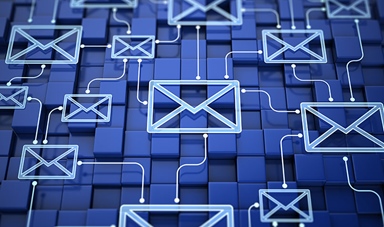Loading component...
At a glance
- Without a clearly defined system of management, inbox overload can hamper productivity.
- Achieving “zero inbox” need not be the end goal if you have a system of prioritising, categorising and staying in control of your inbox.
- There are simple steps that can be taken towards changing habits and routines in order to prevent email encroaching on tasks that require focus.
A large part of our professional life revolves around email. On average, a professional interacts with 120 emails in a day, which can cause inbox overload and often gets in the way of doing productive, high-value work.
According to Tim Hynes, director of Spacemakers and creator of the Email Ninja training course, “when you get dozens of emails in a day, you need a workflow and habits to support your system”.
“There are only so many hacks and automations that you can implement to help you manage high-volume email,” Hynes says.
“The key to success in email management is deliberate, intentional behaviour and habits.”
Hynes shares these practical tips on how you can stay on top of your emails.
Turn off alerts for new emails
“If you have email alerts turned on all the time for all your devices, then you are being conditioned, in a classic Pavlovian way, by your technology,” Hynes says. “You might not even understand how your habits have shaped you.
“In almost every role and position that we’ve come across – unless you are in the media, an executive assistant or front-of-house reception – people can always turn their alerts off and be more intentional as to when they check their emails.”
Create a simple email filing system
“Don’t treat your inbox like an everything-box, such as a filing cabinet, an archive box or to-do-list,” recommends Hynes. “You should have a workflow and organising system to categorise your emails, even if you don’t achieve a ‘zero inbox’.”
The idea behind a zero inbox is that you should never have emails sitting in your inbox. Instead, the inbox should act as an in-tray. You start by considering what needs to be done with the email and then act upon it when you are ready.
Hynes recommends starting with a simple system to avoid feeling overwhelmed with too many email folders.
- Action folder: Emails that will require more than two minutes of your time.
- Waiting folder: Emails to which you are awaiting a reply.
- Reading folder: Emails with interesting articles, journal articles, blogs – it’s like an email bookshelf.
- Archive folder: Emails where no action is needed. Emails can be filed here and searched for when required.
- Trash: Deleted emails that require no action. According to Hynes, the simplicity of just five folders makes organising email much easier.
Practise self-control
“Is the value of your job in checking and responding to emails every five seconds? Almost always the answer is ‘no’, but that’s what we do,” Hynes says.
Hynes points to research that most knowledge workers can get away with checking emails three to four times per day.
“If you check your emails at intervals throughout the day, you can be responsive. Someone will hear from you within three to four hours, which is acceptable, instead of being reactive and checking emails 40 times a day.”
“The compulsion to check your emails is a battle that even the most seasoned zero inbox followers struggle with. One reason for this is we have neurotransmitters that release dopamine in small doses every time we see and react to a new email,” explains Hynes.
The average person needs 23 minutes to get fully back on task after an interruption. Hynes has a solution for those struggling to resist inbox grazing.
“Check emails every hour on the hour,” he says. “It’s an easy habit trigger, and you are giving yourself uninterrupted time, 45 to 60 minutes, to do something cognitive, of high value.”
CPA Library resource:
Do not start the day with email
Hynes’s top productivity hack is to rethink your morning routine.
“Spend the first few minutes by reviewing your action folder and what needs to be done and prioritise, and then go to the inbox. By starting in the action folder, you are more likely to prioritise emails effectively.
“The inbox is incredibly dynamic, and if you manage your to-do list in your inbox, you need to have very high discipline to not check the new emails that come in.”
Reset to zero inbox
How do you get started with zero inbox if you have tens of thousands of emails in your inbox?
“When you have reset to ‘inbox zero’ and start a new workflow, you are actually creating a trigger in your brain that it is possible to get to zero and stay there.”
“Select all emails in your inbox, except the most urgent ones, and just move them into a filing folder to start with a zero email inbox,” says Hynes. “Then, make a plan over the week to review the filed emails, moving any outstanding emails to the action folder for follow-up.
“Getting to zero inbox isn’t the ultimate goal for me. It is about knowing how to get control and organise emails outside the inbox.”

